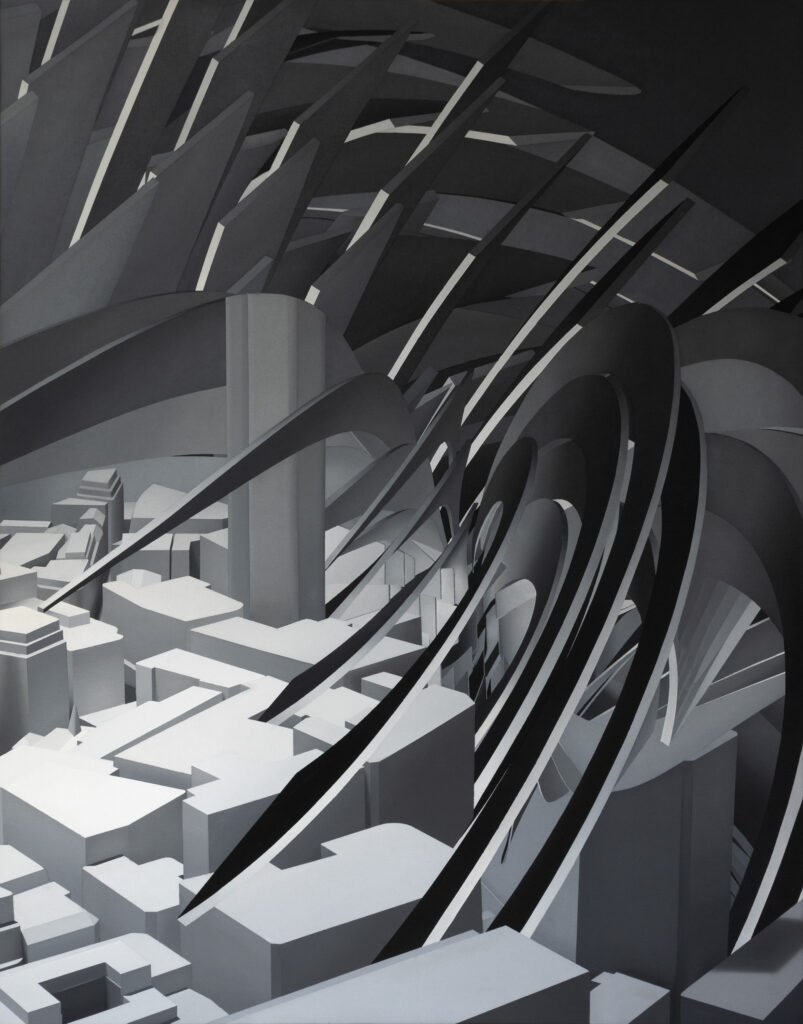Andrés Moreno Hoffmann | Untitled, Art Miami Beach 2024
In 2018, two teams of scientists, one led by Mikael Rechtsman, a physicist at Pennsylvania State University, and the other lead by Oded Zilberberg in Switzerland, concurrently published research in the journal Nature on the socalled quantum Hall effect, which occurs only in the fourth dimension. The studies proposed a method for observing phenomena of higher dimensions from a system of lower dimensions. To analyze the four-dimensional space in threedimensional terms, the researchers developed their experiments in two dimensions, observing the three-dimensional shadow projected from the fourth dimension.
This type of scientific research aligns with a millennia-old tradition in the arts, which has sought to recreate multidimensionality through bidimensionality. Our nature as three-dimensional beings and our physiological inability to physically experience a broader number of dimensions, aside from the temporal one, has not hindered artists from seeking representation of spatial fourth dimension, or even more dimensions, which would be imperceptible to us. In the Renaissance, with the development of perspective, spatial representation evolved into three linear dimensions, surpassing the medieval view of merely two dimensions. In the early 20th century, as the art world abandoned the quest for mimesis with nature and Albert Einstein published his theory of special relativity, introducing the concept of spacetime, a group of avant-garde artists, inspired by these advances in physics and non-Euclidean geometries, dedicated themselves to depicting tetra dimensionality on canvas.
Drawing on references from particle physics, quantum physics, architecture, and geometry, the project Spatial Dimensions engages in the reflection on the capacity to represent multiple dimensions on a bidimensional plane. The project seeks to recreate two variables. The first is inspired by the physical theory of superstrings, which proposes that there are ten, eleven, or twenty-six dimensions in which thin strings vibrate, indistinguishable due to their microscopic sizes. The second involves revisiting how we perceive the concept of a straight line. Assuming that everything oscillates in the cosmic fabric, the natural state of the line would be ninety-nine percent curved.



